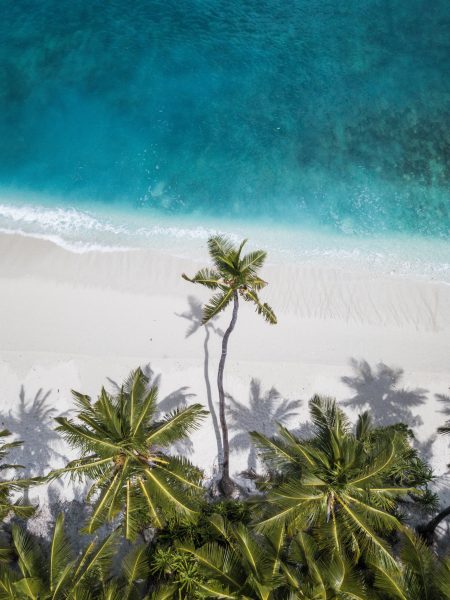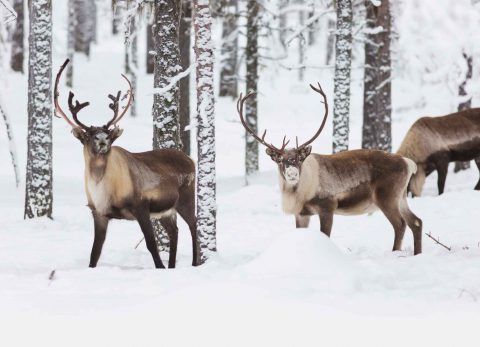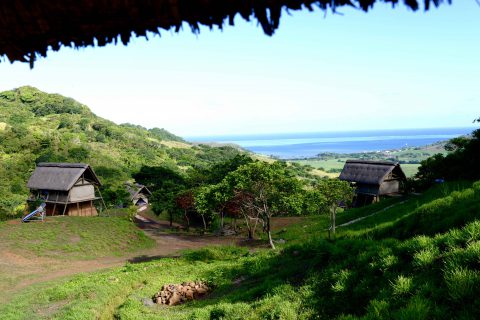Financial Mail Travel
The Legend Of Half Tree Hollow
There’s a story in my family that when my grandfather was shipping home from war in 1945, halfway down the Atlantic on his way to Cape Town, his ship stopped at the island of St Helena and he wandered up into the hills and made a decision that changed all our lives.
He wasn’t married to my grandmother at the time, and in fact when he left for war he was unsure which of two women he would marry. He was an optimistic fellow and had no doubt he would return from the North Sea convoys in one piece, but he spent many long hours at sea staring at the landless horizon, watching gannets fall into the sea like showers of silver arrows, his heart as heavy as an anchor, trying to decide which of two equally strong candidates he would decide to love forever.
He disembarked in Jamestown, then and now the only town on the island, two converging streets of colourful Georgian houses and shady porches nestled in the deep volcanic valley between two steep, copper-coloured cliffs. He climbed the 699 vertical stone steps of Jacob’s Ladder out of town and up on the plain of Half Tree Hollow he saw a grand tree spreading shade.
He was hot and out of breath but the Atlantic spread blue all around, and he realised how very small each one of us is, and how briefly we live and disappear, like a sparkle of sunshine on the surface of the sea. And as he rested beneath the tree’s branches he realised in a flash that he’d wasted enough time, so he whipped out his penknife and carved my grandmother’s initials in the trunk. He told this story many times over the years, and as a family we’ve come to revere that distant tree on a distant island halfway between Brazil and Angola. It was a tree that imparted such wisdom to my granddad and allowed all of the rest of us to exist at all.
I’ve always wanted to go to St Helena and find that tree and see her initials. I had a particular reason this time, because I was taking my girlfriend and for a while I’d been going backwards and forwards on an important decision, and hidden deep in my suitcase was a small velvet box with a ring inside.
It didn’t take long to realise this wouldn’t be as easy as grandpa made it sound. From the sea, St Helena is a fortress – a ring of sheer barren stone rising from the ocean, the one prison from which the English knew Napoleon Bonaparte would never escape, and so exiled him there after Waterloo. But from above, on the new Airlink flight from Johannesburg, the interior of the island is as green and pleasant as a corner of England, all forests and meadows and waterfalls and orchards, more trees and trunks than you could shake a stick at.
The airport on Prosperous Bay Plain is barely a year or two old and it hasn’t changed the island much. It’s still a place adrift in time, isolated from the world. People still sleep with their doors and windows open and grow their own fruit and vegetables to trade for fish down at the harbour. In the post office, I met a woman who sighed and tutted and told me solemnly about the time someone stole a sweater off her washing line 12 years before. They never did catch the culprit and, later, other locals confided that she’s such a drama queen, many Saints doubt whether this terrifying event ever really happened at all.
On the porch of the Consulate Hotel I met an ancient man, his face like a varnished walnut, who savoured a glass of rum and remembered the time when he was a young boy and saw a dinosaur in the moonlight up on the cliffs one night, walking back after fishing in Lemon Valley Bay. “Ever since then,” he said, “I knew there are wonderful things in this world, and I’ll never have to leave the island to look for them.”
I was too nervous to go looking for the tree straight away. Instead I went to play the world’s most remote golf course, on the windswept ledge of Longwood, near Deadwood Plain where Boer prisoners of war were held in white tented camps, close to the blue wooden house where Napoleon tended his flower garden and plotted his escape while British troops watched with telescopes and spies.
The course has certain peculiarities. Some of the greens are as smooth and even as a pineapple. They seem to have been designed by a mad scientist using anti-gravity technology. The same ball struck in the same direction at the same strength can either travel five centimetres and come to a stubborn stop, or keep on rolling for 25 minutes. On the fourth hole, you take a two-shot penalty if you hit one of the donkeys. The endemic St Helena wirebird, a critically endangered spindly-legged plover found nowhere else in the world, is sometimes to be spotted poking about on the fairway of the eighth, and when I threw my club in rage, I hope that wasn’t a wirebird it landed on.
Afterwards in Longwood House, I leaned against Napoleon’s snooker table and sat on his bed and tried on his three-cornered hat, admiring myself in his mirror and trying to imagine myself making important decisions that affected millions of people’s lives. It was hard; I was having a tough enough time making a decision that affected only two people’s lives. Then someone official caught me wearing the Emperor’s hat and started yelling, and I retreated like the French from Moscow, but faster. I took a clipping from a geranium in his garden in revenge, and snuck it away in a dampened sock.
I went diving in Jamestown harbour on the SS Papanui, a steamship that caught fire and sank in 1911 in 12 metres of warm water. I saw a crayfish crawling between barnacle-encrusted Champagne bottles, bold as brass and twice as tasty. All the scene needed was a bed of oysters and a white linen tablecloth.
We went out on a small boat past Horse Pasture Point and Egg Island to swim with migrating whale sharks. The sea was very blue and bottomless and the whale sharks were as massive as submarines, graceful and gentle as the birds from some beautiful weird dream.
St Helena is only eight kilometres wide and 16 kilometres long but the terrain changes constantly, from the smooth, twisted copper-coloured gorge of the Gates of Hell to the empty rolling green slopes of Blue Hill, dotted with white sheep and yellow Alpine flowers. I took a long hike up through the tree ferns and fairy terns of the cloud forest to Diana’s Peak, the highest spot on the island. It felt like ascending the tip of a mast on a tiny ship in a fathomless sea.
Finally, I could delay it no longer. I took my partner and we climbed Jacob’s Ladder to the old fort on top of Ladder Hill and then wound round to Half Tree Hollow. I knew already that I wouldn’t find the tree. There are loads of trees in Half Tree Hollow, and none of them in any way resemble my grandpa’s descriptions, but I had to look.
“What are you looking for?” asked a local.
“A tree,” I said.
“Don’t you have trees where you come from?”
I wondered if he’d misremembered the location or just made up the whole story, but my partner told me it didn’t matter. It was like the old man and his dinosaur: the story gives pleasure and meaning, and it was true until we started looking, so perhaps we should stop looking.
And that was so true and so wise that I realised I’d wasted enough time. Towards the end of his life, Napoleon realised he was never leaving St Helena. One day while riding he found a valley filled with daffodils with a fresh running spring, and requested he be buried there when he died. We walked down the gentle path and found the stone slab of the Emperor’s grave. And there, a little weirdly, surprising her, surprising myself, I went down on one knee and took a small box from my pocket and asked her a question and she laughed and said yes.






 Sign-up and receive the Business Media MAGS newsletter OR SA Mining newsletter straight to your inbox.
Sign-up and receive the Business Media MAGS newsletter OR SA Mining newsletter straight to your inbox.